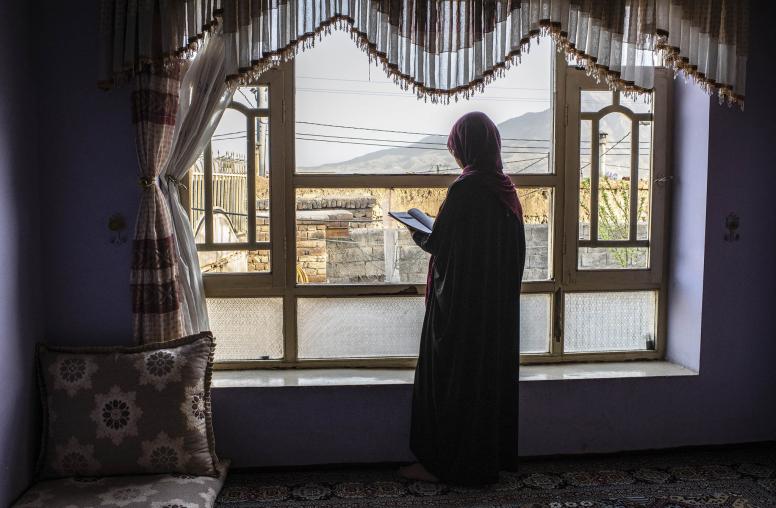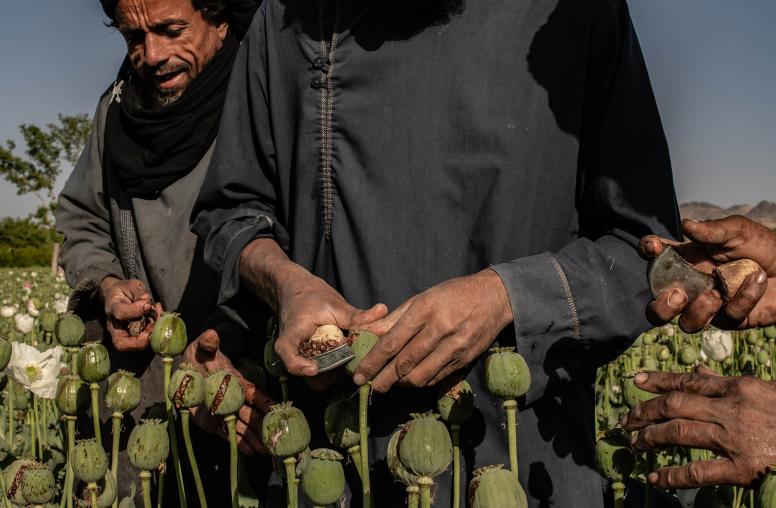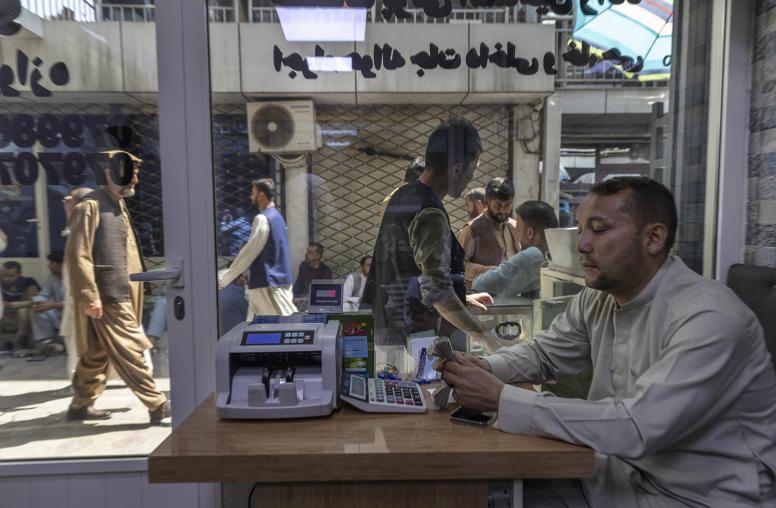A Foot Forward for Peace in Afghanistan?
Historic talks between Taliban and Afghan representatives could propel the peace process forward.
Taliban and Afghan representatives agreed early this week to a basic, albeit non-binding, roadmap for intra-Afghan negotiations aimed at ending the 18-year war. Since the U.S. resumed direct talks with the Taliban last September, the two sides have focused on the withdrawal of foreign forces and the steps the Taliban will take against terrorists on Afghan soil. Meanwhile, intra-Afghan talks on a political roadmap have yet to get off the ground. After months of seeming stasis, this week’s Doha meeting has injected renewed hope. USIP’s Scott Smith looks at what happened this week, what it means for Afghan women, and the next steps in the peace process.

After the last effort at intra-Afghan talks in early April failed, was there any progress from the talks in Qatar earlier this week?
The real “progress” is that the meeting happened at all. The attempt to hold a similar meeting between the Taliban and Afghans failed in April when the Afghan delegation couldn’t agree on who should attend and tried to send a delegation of 250 people. U.S. Special Representative for Afghanistan Reconciliation Ambassador Zalmay Khalilzad then asked Ambassador Markus Potzel, Germany’s special representative for Afghanistan and Pakistan, to help determine a more manageable but still representative delegation. He was able to select around 50 participants, including six women from the government, political opposition, and civil society.
While those from the government attended in their personal capacity, it was the first time a dialogue between the Taliban and Afghan representatives has taken place in this format. Although there have been previous meetings between Afghan politicians and Taliban representatives in Moscow, this is the first meeting where the Afghan delegation included individuals who are in the Afghan government, and that was clearly within the framework of the peace process spearheaded by Amb. Khalilzad. One of the reasons I think that this delegation was more manageable was that it was comprised of members of the new generation of Afghans—their egos are not as strong as the older generation, but they have a greater stake in the outcome of negotiations.
Another positive outcome was the agreement on a joint statement, which had not been expected. The statement, while nonbonding, called for future meetings in this format and identified a few confidence-building measures such as the release by both sides of elderly prisoners and a cessation of attacks near civilian areas. The meeting has generated a lot of optimism among Afghans. It was already a success for taking place and not breaking down, but the positivity that came out of it should make it easier to believe that a peace deal is possible. At the very least, these talks revived what many feared had become a stalled process.
The talks led to a joint agreement that said both sides would work to assure women’s rights. Has the Taliban indicated a willingness to move away from its traditionally hardline position on women’s issues?
The Taliban office in Doha has been trying for some time to convince international interlocutors that they have moderated their position on women since their rule in the 1990s. During that period, the Taliban were particularly draconian in their treatment of women, including stoning for alleged adultery and other offenses.
As a part of a series of steps aimed to move toward peace, the Doha statement says the conflict parties will consider “[a]ssuring women’s rights in political, social, economic, educational, and cultural affairs … within the Islamic framework of Islamic values.” (This comes from an unofficial translation of the joint statement released on Twitter by Amb. Khalilzad.) What is meant by “within the Islamic framework of Islamic values” will be the subject of intensive discussion when the intra-Afghan talks begin. The Afghan delegation from Kabul included six women and the Taliban reportedly interacted well with them. But part of the purpose of this delegation was to show how much Afghanistan has changed, especially with regard to women’s empowerment.
It might be that the Taliban would be willing to allow rights accorded to women in more conservative Islamic countries—education, but segregated; employment, but only in certain fields; and so forth—but Afghan women will rightly want far more than that.
There are a number of key issues—the timing of troop withdrawals, future intra-Afghan talks and a cease-fire to halt the recent uptick in violence—that were not addressed. What’s next for negotiations?
What is next is for the U.S. and Taliban to reach an agreement on U.S. troop withdrawal and Taliban anti-terrorism guarantees. This is the Taliban pre-condition for beginning talks with Kabul on a cease-fire and a future political order. Both sides say they are very close. A few days ago, Mohammad Abbas Stanikzai, the Taliban’s chief negotiator, said there were no differences between the two sides. The stated U.S. hope is to reach a framework agreement on the way forward by the beginning of February. While this is a tall order, recent events and statements give a little more reason for optimism.
Scott Smith is an advisor on Afghanistan at the U.S. Institute of Peace.



